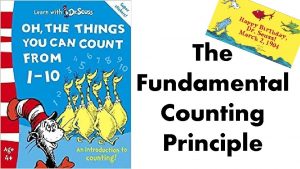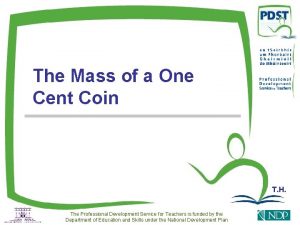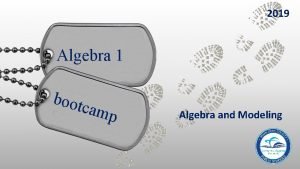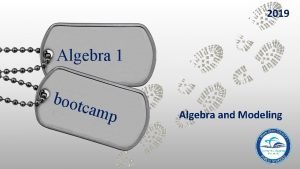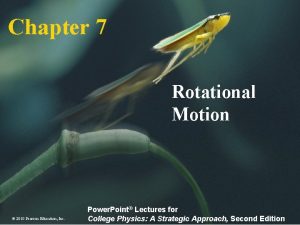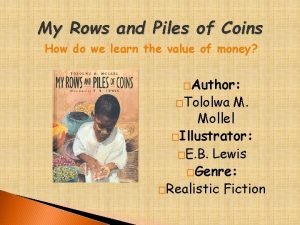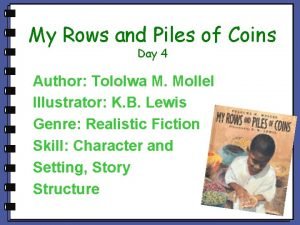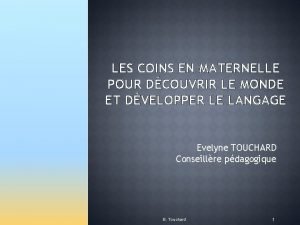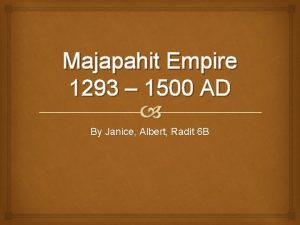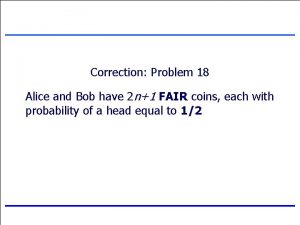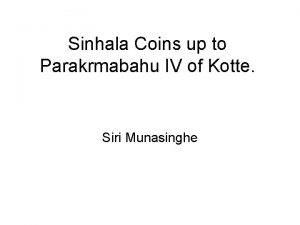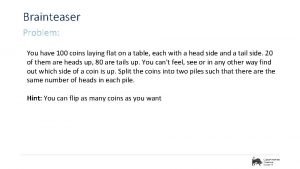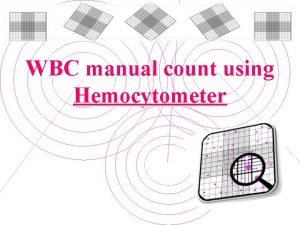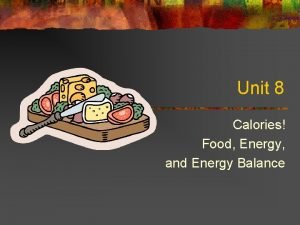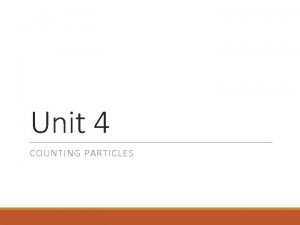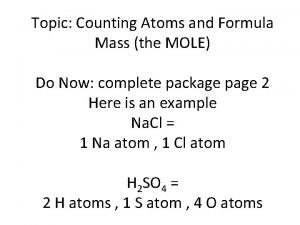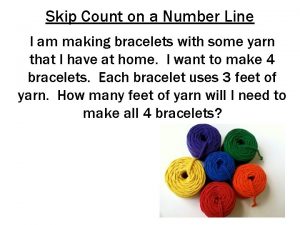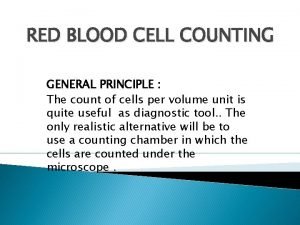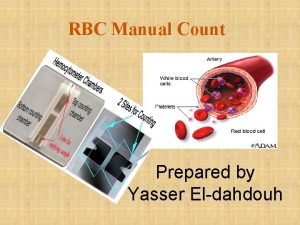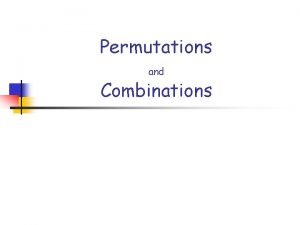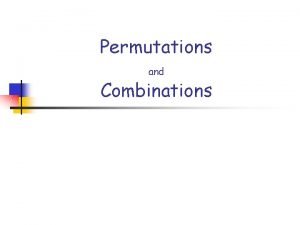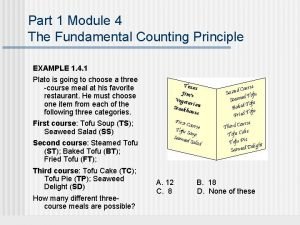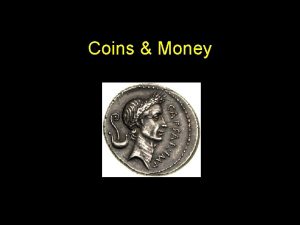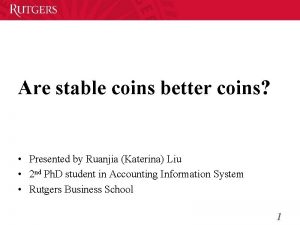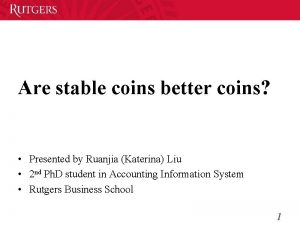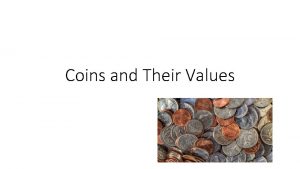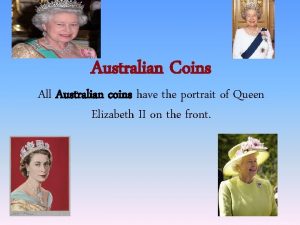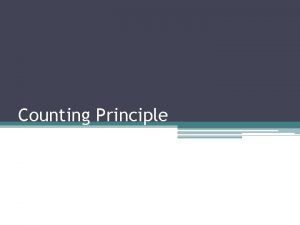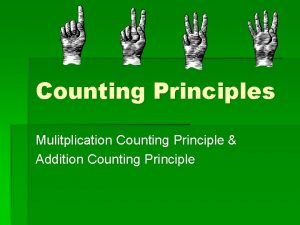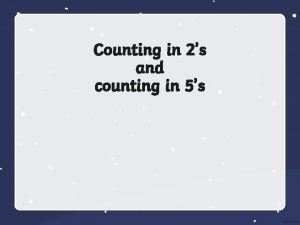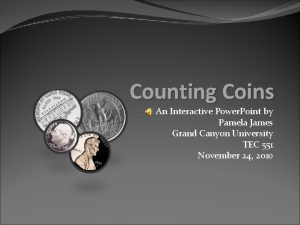YEAR 1 Money Recognising coins Recognising notes Counting









































- Slides: 41

YEAR 1 Money Recognising coins Recognising notes Counting coins Block 5 – Week 9

Lesson 1 Step: Recognising coins

1 p

2 p

5 p

10 p

20 p

50 p



Fluency Can you describe a 5 p coin? What is the same and what is different between a 10 p coin and a 50 p coin? Which coins are round? Which coin is smaller than a 1 p coin?

Fluency Complete the table. True False There are 3 silver coins. A 1 p coin is bigger than a 10 p coin. A 50 p coin is bigger than a 20 p coin. There are less bronze coins than silver. The coin with the largest value is £ 1.

Look at the coins below. Reasoning Can you describe them? What is the same? What is different?

Match the equal amounts.

Which amounts are equal to 15 p?

Which amounts are equal to 35 p?

Which amounts are equal to £ 1 and 50 p?

The two amounts below are equal. Is Tam correct? Explain your answer. Amount A shows 56 p. Amount B shows 46 p.

Problem solving There are double the amount of coins with even values than coins with odd values. Investigate this for coins below £ 1. Yes, there are 4 coins with even values and 2 coins with odd values. Odd coins: 1 p, 5 p. Even coins: 2 p, 10 p, 20 p, 50 p.

Lesson 2 Step: Recognising notes


£ 10

£ 20

Look at the notes below. Can you describe them? What is the same? What is different?

Do I have more than £ 15? Yes, Dom has £ 20 in total.

Who has the most money? Explain how you know. Kat has the most as she has £ 20. Mo only has £ 15.

Lesson 3 Step: Counting coins

What amounts are shown? 6 p 14 p

Fluency What amounts are shown? 25 p 70 p 35 p

What amounts are shown? 10 p 19 p 34 p

Complete the bar models. £ 5 £ 12

Fluency Use coins on your table to make the following amounts: 9 p 18 p 59 p 42 p 75 p £ 1 and 15 p Did you use the fewest amount of coins?

How many different ways can you make 5 p? List all the combinations. 5 x 1 p coins 2 p coin and 3 x 1 p coins 2 x 2 p coins and a 1 p coin Problem solving

Lesson 4 Step: Comparing amounts

Use <, > or = to compare the money. < > =

Use <, > or = to compare the amounts. < > =

Use <, > or = to compare the amounts. < = >

Practical: Choose two amount cards and compare them using > , < or =. Fluency

Reasoning If you find the total of three different coins they will always give an odd total. Always, sometimes or never? Sometimes. 1 p + 2 p + 5 p = 8 p (even) 2 p + 5 p + 10 p = 17 p (odd)

List the fewest amount of coins you can use to make the following amounts? 66 p 49 p £ 1 and 8 p 50 p, 10 p, 5 p, 1 p 20 p, 5 p, 2 p £ 1, 5 p, 2 p, 1 p Problem solving

Lesson 5 Step: Consolidation
 Money money money team
Money money money team Recognizing opportunities and generating ideas
Recognizing opportunities and generating ideas Fundamental counting principle notes
Fundamental counting principle notes Parable of the gold coins
Parable of the gold coins Mass of coins
Mass of coins Coins from time of jesus
Coins from time of jesus 2019 algebra 1 bootcamp answers
2019 algebra 1 bootcamp answers Joanna has a total of 50 coins in her purse
Joanna has a total of 50 coins in her purse Vending machine disadvantages
Vending machine disadvantages Two coins rotate on a turntable
Two coins rotate on a turntable My rows and piles of coins
My rows and piles of coins My rows and piles of coins questions
My rows and piles of coins questions Coin classe maternelle
Coin classe maternelle How to use snap coins
How to use snap coins Majapahit empire peta
Majapahit empire peta Alice and bob have 2n+1 coins
Alice and bob have 2n+1 coins Turkish wedding ceremonies
Turkish wedding ceremonies As the value of roman coins decreased people began to
As the value of roman coins decreased people began to Srivatsa symbol
Srivatsa symbol You have 100 coins laying flat on a table
You have 100 coins laying flat on a table Symbols that represent jay gatsby
Symbols that represent jay gatsby Money smart money match
Money smart money match Money on money multiple
Money on money multiple Satire in the great gatsby
Satire in the great gatsby Tom buchanan character traits
Tom buchanan character traits Money madness poem text
Money madness poem text Y6 leavers poem
Y6 leavers poem How to count money notes
How to count money notes Cube wisc
Cube wisc Wbc count procedure manual
Wbc count procedure manual Biobeyond unit 8 nutrition lab counting calories
Biobeyond unit 8 nutrition lab counting calories Counting by weighing
Counting by weighing How to count atoms in a formula
How to count atoms in a formula Stoll's dilution technique
Stoll's dilution technique Skip counting number line
Skip counting number line Thoma pipette
Thoma pipette Rbc counting chamber
Rbc counting chamber Rbc count formula manual
Rbc count formula manual Permutation fundamental counting principle
Permutation fundamental counting principle Fundamental counting principle examples
Fundamental counting principle examples Reticulocyte count
Reticulocyte count Fundamental principle of counting examples
Fundamental principle of counting examples


